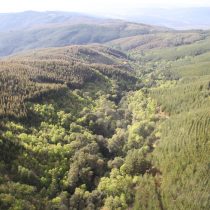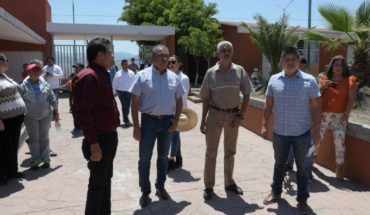
As a result of an unprecedented work, which collected updated information available in Chile and the world, as well as the vision of professionals, technicians and also local inhabitants linked to the subject, the first Guide for the Monitoring of Forest Restoration at Site Scale that the country has was presented.
This publication marks a milestone not only in terms of the forestry sector, but also in terms of Chile’s climate action. This, considering that an important part of the national commitments in the Paris Agreement go through restorative actions, such as one of the Nature-Based Solutions (SbN) that contribute to face climate change and its effects.
The guide was prepared within the framework of the project “Development of alliances for the management of forest restoration in Nahuelbuta”, executed by the Regional Government of Biobío, Fundación Nahuelbuta, Association of Municipalities of the Biobío Region and WWF Chile, with funding from the European Union (EU).
It was presented in a webinar where the Head of Cooperation of the EU Delegation in Chile, Ewout Sandker, valued the contribution made from the project and from the territory, highlighting the global impact it could also have in the context of measures and actions to address the current climate crisis.
In the same vein, the head of the Department of Planning and Territorial Planning of the Regional Government of Biobío, Jorge Urrea, thanked the work done to support and promote restoration in the country, especially highlighting the participation and contribution of representatives of the territory of Nahuelbuta.
The importance of monitoring
As Carlos Vergara, Forest and Restoration Manager of WWF Chile, points out, although various restoration-oriented initiatives are currently being implemented, there is a gap in terms of monitoring in the country.
“There are very few projects that consider this aspect, even less with systematic efforts, which is not consistent with the crucial importance of monitoring and adaptive management of restoration actions. Given this vacuum, we really cannot know for sure how many hectares are being effectively restored and with what long-term benefits in Chile, which can even complicate the fulfillment of international commitments,” said the expert.
During the webinar it was possible to learn about two successful experiences of ecosystem restoration monitoring, both from the public and private sectors. These were the cases of Torres del Paine National Park and Forestal Arauco National Park.
Meanwhile, Marta González, president of the National Restoration Network and professional of Infor biobío headquarters, valued the publication of this guide, emphasizing that although there are other publications on the subject, it stands out for a point that she considers key: to involve the communities, so that they can also build monitoring plans, carry out these evaluations and use the results that the monitoring generates.
“It is a very valuable and salvageable step of this guide, because the transfer to the communities of the different attributes that we want to evaluate is key. Communities cannot be left aside to be part of this accompaniment, they are in the territory and have to do with the temporality in which various events occur that may have varied in the territory,” he said.
From Nahuelbuta, Cledia Flores, president of the Pehuen Nalqueros Collectors Association, called for the permanent protection of the collection areas, incorporating them as Areas of High Conservation Value.
For his part, Pedro Peña, member of the Nahuelbuta Foundation and the Council for the Restoration of Nahuelbuta, stressed that the area is relevant not only for its biodiversity, but also for constituting a bioclimatic refuge, which today is threatened.
“Nahuelbuta is a hypercomplex system, connected to the Pacific Ocean, the Humboldt Current, and the climate and water of the area depend on this mountain range, something that the native peoples have super clear,” he said.
During the webinar, an interactive Geoportal was also presented, developed by WWF Chile, where it is possible to find information about the project in Nahuelbuta, as well as the details of all the restoration initiatives deployed in the territory.
“This contribution to site-scale monitoring is key, not only to ensure and verify that the actions that are implemented have results, but also to be considered at the scale of the National Landscape Scale Restoration Plan. The Guide of steps for a common understanding on the monitoring of restoration and contributes to that pending conversation on how we are going to measure progress towards climate change commitments in relation to forests,” said Trevor Walter, coordinator of the Terrestrial Landscapes Program of WWF Chile.





